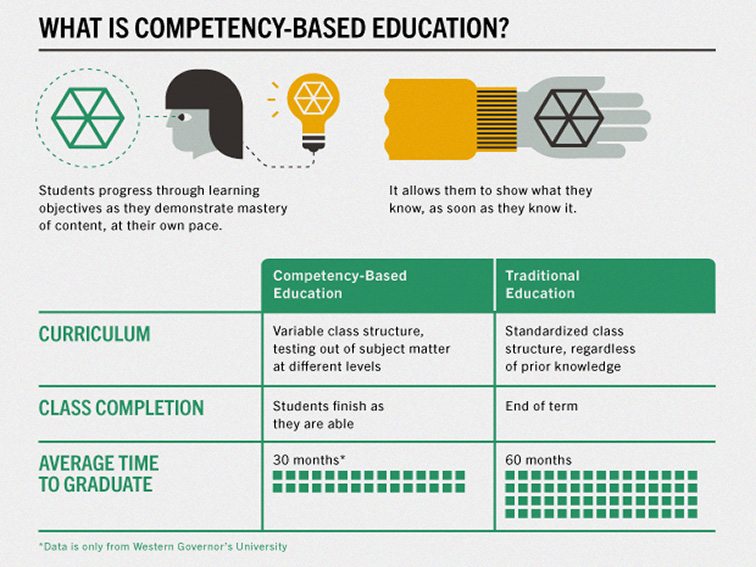
Competency-Based Learning: A Definition
Competency-based learning is an approach to education that focuses on the student’s demonstration of desired learning outcomes as central to the learning process.
It is concerned chiefly with a student’s progression through curriculum at their own pace, depth, etc. As competencies are proven, students continue to progress. It is similar to mastery-based learning, with the primary difference being that competency-based learning often focuses on observable skills or ‘competencies,’ while mastery learning may be academic–as likely to focus on concepts as skills.
Like most things education-related, there is disagreement of what competency-based learning actually means, what its defining traits are, and how it should ideally be used or function. It is traditionally thought of in terms of skills and vocation, but it can be entirely ‘academic’ as well.
The Characteristics Of Competency-Based Learning
A key characteristic of this type of learning is its focus on mastery. In other learning models, students are exposed to content–whether skills or concepts–over time, and success is measured summatively. In a competency-based learning system, students are not allowed to continue until they have demonstrated mastery of the identified competencies (i.e., the desired learning outcomes to be demonstrated). In this way, the definition of competency-based learning is closely tied to mastery learning.
Competency-based learning is similar to outcomes-based learning in that said outcomes–in this case, called ‘competencies’–are identified beforehand, and students are frequently assessed. In this way, competency-based learning can be thought of as a form of outcomes-based learning.
See also 21st Century Teacher’s Dictionary
Pros & Cons Of Competency-Based Learning
Its effectiveness, of course, depends on the ecology it is embedded in. In a system with deep and diverse support systems, robust assessment forms, and clear and manageable learning outcomes that are accessible to all learners, competency-based learning can be an effective model, potentially reducing inefficiency (including time spent learning) and increasing pedagogical precision and student achievement.
Its strengths lie in its flexibility, as learners are able to move at their own pace. This supports students with diverse knowledge backgrounds, literacy levels, and other related aptitudes. Its challenges should sound familiar to most educators, including the difficulty in identifying–and agreeing upon–the most important competencies, how to best assess them, and how to support learners that struggle.
On paper, technology adds a new wrinkle to competency-based learning, as it provides students with access to content to develop said competencies. If every student can access the same content the teacher does, there is less of a need for the class to move together, and students are able to prove their understanding on more personal and authentic terms.
Infographic source Rasmussen College
